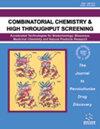基于代谢组学的神保片治疗肾阳虚综合征研究
IF 1.6
4区 医学
Q4 BIOCHEMICAL RESEARCH METHODS
Combinatorial chemistry & high throughput screening
Pub Date : 2024-09-18
DOI:10.2174/0113862073316238240827110846
引用次数: 0
摘要
目的:本研究旨在利用代谢组学方法阐明神保片的作用机制。研究背景肾阳虚是中医证候分型中常见的证候类型,与多种代谢途径紊乱密切相关,是许多疾病的根本原因和基础证候类型。神宝片能明显改善肾阳虚证的主要症状,但神宝片对肾阳虚证的作用机制尚不清楚。研究方法大鼠腹腔注射氢化可的松,每天一次,连续40天,模拟肾阳虚综合征。采用传统药效学指标(体质量、生化指标和病理指标)评价药效。收集大鼠的血清、尿液和粪便。采用 UPLC/MS 代谢组学方法研究血清的整体代谢谱,采用 GC/MS 代谢组学方法研究尿液和粪便的代谢谱。结果显示结果表明,治疗组的综合征明显改善,综合征大鼠出现了明显的代谢紊乱,并发现了47个潜在的生物标记物。通路分析表明,烟酸和烟酰胺代谢,甘氨酸、丝氨酸和三酮代谢,氨基酰tRNA生物合成,糖醛酸和二羧酸代谢是神宝片改善肾阳虚综合征的主要途径。结论神保片改善肾阳虚综合征的作用机制涉及能量代谢、氨基酸代谢、胆汁酸代谢、脂肪酸代谢和肠道微生物的调节。这项工作表明,代谢组学是研究中医证候理论精髓和中医机理的一种很有前途的工具。本文章由计算机程序翻译,如有差异,请以英文原文为准。
Study on Shenbao Tablet in Treating Kidney-yang Deficiency Syndromebased on Metabolomics
Aim: The aim of this study was to elucidate the mechanism of action of Shenbao tablets using metabolomics approach. Background: Kidney-Yang deficiency is a common syndrome type in traditional Chinese Medicine (TCM) syndrome typology, closely related to disorders of multiple metabolic pathways and is the root cause and underlying syndrome type of many diseases. Shenbao tablets can significantly improve the main symptoms of kidney yang deficiency syndrome, but the mechanism of action of Shenbao tablets on kidney yang deficiency syndrome is still unknown. Methods: The rats were intraperitoneally injected with hydrocortisone once a day for 40 days to simulate the syndrome. Traditional pharmacodynamic indicators (body mass, biochemical indicators and pathology) were used to evaluate the efficacy of the medicine. Serum, urine and feces were collected from rats. UPLC/MS metabolomics method was used to study the overall metabolic profile of serum, while GC/MS metabolomics method was used to study the metabolic spectrum of urine and feces. Results: Results showed that the syndrome was significantly improved in the treatment group, and obvious metabolic disorders were observed in rats with the syndrome, with 47 potential biomarkers identified. Pathway analysis showed that nicotinate and nicotinamide metabolism, glycine, serine and trione metabolism, aminoacyl tRNA biosynthesis, glycoxylate and dicarboxylate metabolism were the major ways for Shenbao tablet to improve kidney-yang deficiency syndrome. Conclusion: The mechanism of action of Shenbao tablet in improving the syndrome involves the regulation of energy metabolism, amino acid metabolism, bile acid metabolism, fatty acid metabolism and intestinal microorganisms. This work shows that metabolomics is a promising tool for studying the essence of syndrome theory in TCM and the mechanisms of TCM.
求助全文
通过发布文献求助,成功后即可免费获取论文全文。
去求助
来源期刊
CiteScore
3.10
自引率
5.60%
发文量
327
审稿时长
7.5 months
期刊介绍:
Combinatorial Chemistry & High Throughput Screening (CCHTS) publishes full length original research articles and reviews/mini-reviews dealing with various topics related to chemical biology (High Throughput Screening, Combinatorial Chemistry, Chemoinformatics, Laboratory Automation and Compound management) in advancing drug discovery research. Original research articles and reviews in the following areas are of special interest to the readers of this journal:
Target identification and validation
Assay design, development, miniaturization and comparison
High throughput/high content/in silico screening and associated technologies
Label-free detection technologies and applications
Stem cell technologies
Biomarkers
ADMET/PK/PD methodologies and screening
Probe discovery and development, hit to lead optimization
Combinatorial chemistry (e.g. small molecules, peptide, nucleic acid or phage display libraries)
Chemical library design and chemical diversity
Chemo/bio-informatics, data mining
Compound management
Pharmacognosy
Natural Products Research (Chemistry, Biology and Pharmacology of Natural Products)
Natural Product Analytical Studies
Bipharmaceutical studies of Natural products
Drug repurposing
Data management and statistical analysis
Laboratory automation, robotics, microfluidics, signal detection technologies
Current & Future Institutional Research Profile
Technology transfer, legal and licensing issues
Patents.

 求助内容:
求助内容: 应助结果提醒方式:
应助结果提醒方式:


